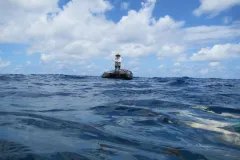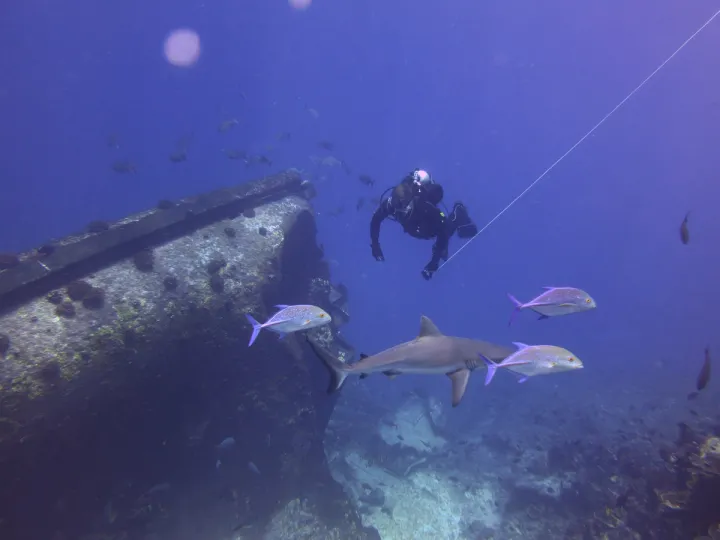Diving in the Middle of Nowhere

Picture this: clear, warm water bathing spectacular coral reefs, clouds of fish, circling sharks, and 17 scientists intent on studying the pristine tropical marine ecosystems of the Southern Line Islands. What could go wrong? That these ecosystems are, at best, nearly two days' transit from modern medical facilities—they sit roughly between Hawaii and Tahiti—may not weigh heavily on the minds of our scientists. But as the Diving Safety Officer for the Scripps Institution of Oceanography, I am always aware that even a relatively minor mishap can lead to major problems. Our team is composed of experienced scientific divers, many with a history of working in remote settings. But any diving, and generally living and working at sea, carries some inherent risk. There are no other vessels out here. We have no Coast Guard on which to fall back. When a problem arises, we are at least 450 miles from the furthest hospital. We must rely on our own preparedness to prevent a worst-case scenario from happening. It’s my job to manage these risks while taking advantage of the extraordinary scientific opportunities that these reefs provide.
I worked with the team leaders for months to establish safe dive plans for this trip. Dive depths and times are conservative, generally less than 60 feet and 60 minutes. No night diving on these reefs—many hungry sharks emerge from the depths each night and would certainly raise the stress level of any diver. Emergency management plans are in place in the event of a diving injury such as decompression sickness, which occurs when dissolved nitrogen in a divers blood and tissue forms bubbles in their body upon ascent, or an air embolism, usually the result of air trying to escape the lungs of a diver accidently holding their breath when ascending to the surface. Diving first aid equipment is on board, and in addition to the standard emergency oxygen kits often found on dive boats, we carry more than 1200 cubic feet of oxygen. This is enough to support an injured diver during a trip from the most remote island to the nearest recompression facility or point of evacuation.
But diving injuries, though potentially extremely serious, are also highly unlikely with such a well-trained team. Rather, what keeps me awake at night is how we manage and track our group of scientists. Ocean currents, intermittent weather, and small boat problems all potentially work to separate our divers from each other and from their support boats. The small support boats that the divers use to get to their work sites must be there when the diver surfaces at the end of a dive, and these boats must get safely back to the expedition vessel, the Hanse Explorer, at the end of each trip.
We plan and conduct our activities so that we know where each of our small boats and divers are working, when they’re due back, and we maintain regular contact through radio while they’re away. To make sure that the divers and small boats don’t get separated, the divers mark their dive site with bright floating buoys. While hovering in shallow water for their precautionary safety stop divers may get swept far from the buoy if there is a strong current, so divers also carry loud whistles and large bright emergency buoys to make them seen and heard from greater distances. Waterproof GPS with two-way radios are strapped to the divers’ equipment; these provide a way to communicate a diver’s location if they can’t be seen or heard. If the divers must work more than several kilometers away from the mother ship, we work in teams with two or three small boats to ensure we are ready and able to provide assistance to each other in these remote waters.
Back home in La Jolla, I act primarily as the manager and administrator for Scripps Oceanography’s Scientific Diving Program, and I spend a lot of my time at my desk. Out in the Southern Line Islands, with so many jobs that need doing, I’m able to step into a myriad of roles—operations coordinator, dive tech, small boat operator, and scientific diver for the suite of research pursuits. So while the demands on me and our divers are greater when diving in the middle of nowhere, so are the rewards. The isolation of these islands means not only are we on our own, but so also are the reefs, whose beauty stems from their protection from pollution and fishing.
Editor’s note: This blog is part of a series inspired by the 2013 Expedition to the Southern Line Islands led by scientists from the Scripps Institution of Oceanography and from San Diego State University. For more information about the expedition visit: http://coralreefsystems.org/


